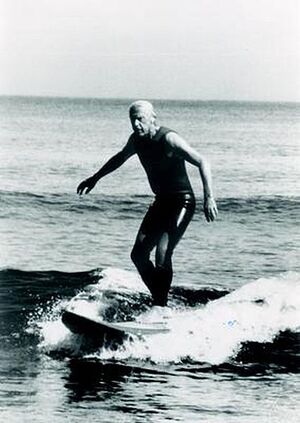Gerhard Ringel (nonfiction): Difference between revisions
No edit summary |
No edit summary |
||
| Line 26: | Line 26: | ||
* [[Four color theorem (nonfiction)]] | * [[Four color theorem (nonfiction)]] | ||
* [[Graph theory (nonfiction)]] | * [[Graph theory (nonfiction)]] | ||
* [[Nora Hartsfield (nonfiction)]] - mathematician who co-authored work with Ringel | |||
* [[Heawood conjecture (nonfiction)]] | * [[Heawood conjecture (nonfiction)]] | ||
* [[Mathematician (nonfiction)]] | * [[Mathematician (nonfiction)]] | ||
| Line 34: | Line 35: | ||
* [https://en.wikipedia.org/wiki/Gerhard_Ringel Gerhard Ringel] @ Wikipedia | * [https://en.wikipedia.org/wiki/Gerhard_Ringel Gerhard Ringel] @ Wikipedia | ||
* [https://books.google.com/books/about/Pearls_in_Graph_Theory.html?id=R6pq0fbQG0QC Pearl in Graph Theory] Nora Hartsfield and Gerhard Ringel | |||
[[Category:Nonfiction (nonfiction)]] | [[Category:Nonfiction (nonfiction)]] | ||
Revision as of 18:02, 24 June 2019
Gerhard Ringel (October 28, 1919 in Kollnbrunn, Austria – June 24, 2008 in Santa Cruz, California) was a German mathematician who earned his Ph.D. from the University of Bonn in 1951. He was one of the pioneers in graph theory and contributed significantly to the proof of the Heawood conjecture (now the Ringel-Youngs theorem), a mathematical problem closely linked with the Four color theorem.
Although born in Kollnbrunn, Ringel was raised in Czechoslovakia and attended Charles University before being drafted into the German Army in 1940 (after Germany had taken control of much of what had been Czechoslovakia. After the war Ringel served for over four years in a Soviet prisoner of war camp.[citation needed]
Gerhard Ringel started his academic career as professor at the Free University Berlin. In 1970 he left Germany due to bureaucratic consequences of the German student movement, and continued his career at the University of California, Santa Cruz, having been invited there by his coauthor, Professor John W. T. (Ted) Youngs.
Ringel was awarded honorary doctorate degrees from the University of Karlsruhe (TH) and the Free University Berlin.
Besides his mathematical skills he was a widely acknowledged entomologist. His main emphasis lay on collecting and breeding butterflies. Prior to his death, he gave his outstanding collection of butterflies to the UCSC Museum of Natural History Collections.
In the News
Fiction cross-reference
Nonfiction cross-reference
- Four color theorem (nonfiction)
- Graph theory (nonfiction)
- Nora Hartsfield (nonfiction) - mathematician who co-authored work with Ringel
- Heawood conjecture (nonfiction)
- Mathematician (nonfiction)
- Mathematics (nonfiction)
- John William Theodore Youngs (nonfiction)
External links:
- Gerhard Ringel @ Wikipedia
- Pearl in Graph Theory Nora Hartsfield and Gerhard Ringel
